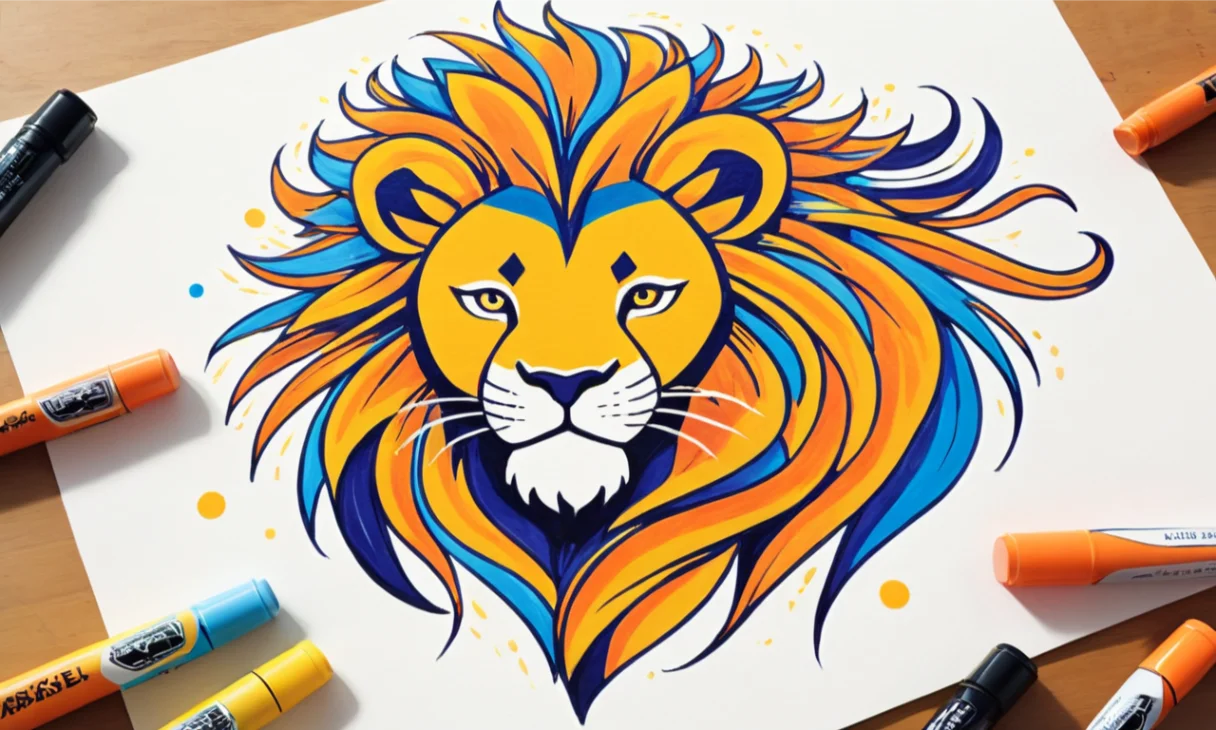Strength is an admired and sought-after trait across cultures. Animals that demonstrate impressive power, whether through brute force or resilience, are often used as symbols of strength. Their representations can be found throughout history in art, literature, folklore, and mythology.
When we think of strength in the animal kingdom1, creatures like lions, bears, elephants, and oxen typically come to mind. However, the scope of strength ranges from the mighty to the miniature. Small yet mighty creatures like ants can lift many times their body weight, while the perseverance of salmon swimming upstream also signifies inner fortitude.
Across different cultures globally, animals signify strength in multifaceted ways. By exploring some of these major animal symbols, we can uncover deeper meanings of power.
Commonly Known Symbols of Strength

The Lion
The lion is universally acknowledged as the king of beasts and the quintessential symbol of strength across cultures.
In ancient civilizations like Egypt and Mesopotamia, lions represented royalty, power, and protection. The iconic Great Sphinx at Giza features the head of a human and the body of a lion.
In Christianity, the lion represents courage and spiritual strength as well as Jesus’s resurrection. It appears in biblical stories like Daniel in the lion’s den.
In Buddhism, the lion symbolizes fearlessness, unconditional kindness, and protection. Statues depicting Buddha seated on a lion’s throne portray his teachings of wisdom and compassion.
The Bear
As one of the largest land carnivores possessing great physical power, the bear naturally epitomizes formidable strength.
In Native American culture, the bear symbolizes physical strength, leadership, and courage. Bears also represent healing and renewal during long winter hibernation.
In Celtic mythology, the bear embodies the spirit warrior in battle. The berserkers, Norse warriors, wore bearskin and invoked the bear’s ferocity in fights.
Across Eurasian cultures, the bear is a popular symbol of shamanic power and mystical wisdom. The constellations Ursa Major and Ursa Minor depict bears as guides to the cosmos.
The Eagle
In ancient Rome, the eagle was the sacred animal of Jupiter and a prominent emblem of the Roman legions. It represented valor, victory, and military prowess.
Many world cultures associate eagles with the divine and feature eagle imagery in religious rituals. Eagles transport prayers, communicate prophecies and represent the soul’s ascent to heaven.
The eagle is a popular national symbol of power and prestige. Its likeness appears on coins, flags, and seals in countries like Mexico, Egypt, Albania, and the Philippines.
Unexpected Symbols of Strength
Ants
Ants may be tiny, but they boast huge strength relative to their size. The average ant can carry objects 50 times its body weight. That would be the equivalent of a person lifting a truck!
In ancient fables like Aesop’s “The Ant and the Grasshopper,” ants represent diligence, unity, and foresight. Their teamwork and perseverance in stocking up food despite obstacles have made them age-old symbols of strength.
In some African and Native American traditions, ants symbolized architectural mastery and community-building. Their anthills and underground networks were considered marvelous feats of engineering.
Salmon
The salmon is a determined fish that migrates from saltwater to freshwater to spawn. Their arduous, upstream swim requires immense physical strength to battle currents and leap up waterfalls.
In Native American mythology of the Pacific Northwest, the salmon symbolizes persistence, renewal, and spiritual power. Tribes celebrated the salmon run as a sacred ritual of life, death, and rebirth.
Early Celtic myths depict the salmon’s journey from oceans to the headwaters of wisdom. This ascension represents the quest for knowledge and spiritual awakening.
Strength in Different Cultures
Elephant (Hinduism)

In Hindu iconography, elephants symbolize strength, wisdom, fertility, and auspiciousness2. The elephant-headed god Ganesha is worshipped as the remover of obstacles.
Indra, the king of the gods, rides the white elephant Airavata, which represents the rainbow and fertility. Temple doors and decor feature carved stone elephants, signifying that strength and good fortune reside within.
Dragon (China)
The dragon is the preeminent symbol of power and strength in Chinese culture. It has been an imperial emblem since the Han Dynasty (206 BCE-220 CE), symbolizing divine authority and good fortune.
According to legend, dragons control water, rainfall, hurricanes, and floods. They possess immense strength to wield such forces of nature. Various folk tales describe dragons as mighty shape-shifters and helpers to mankind.
Sphinx (Egypt)
The Great Sphinx of Giza epitomizes pharaohic power and the divine strength of gods. With a lion’s body and human head, this mythical creature was considered a solar and royal guardian.
Sphinx imagery first appeared around 2500 BC. Subsequent Egyptian rulers adopted the sphinx motif for temples, statues, seals, vessels, furniture, and jewelry to link their reign with the sun god’s strength.
Conclusion
Animal symbols of strength can instill courage and motivation during difficult times. By exploring their representations across cultures, we uncover deeper meaning in values like resilience, justice, protection, spirituality, and leadership.
Whether mighty or small, these creatures demonstrate incredible physical and inner strength through their abilities and mythological symbolism. As we learn more about them, may we discover our own wells of fortitude.
